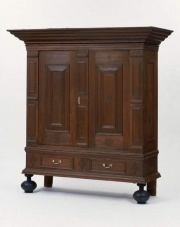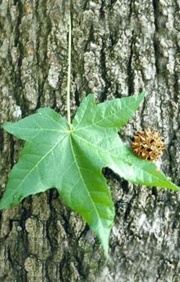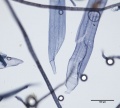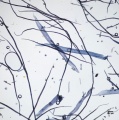Liquidambar
Description
Any of several deciduous trees of the genus Liquidambar, such as the American sweetgum (Liquidambar styraciflua) and the Oriental sweetgum (Liquidambar orientalis). Liquidamber trees are primarily ornamental producing bright red, star shaped five-pointed leaves in the fall. The common hardwood occurs from Connecticut through Central America. Liquidambar trees produce a reddish-brown heartwood that is commonly sold as red gum wood. The heavy wood is valued for furniture, boxes, crates, millwork and small decorative items. It is readily dyed black and used as a substitute for ebony. The resin from liquidambar trees (storax) has been used in perfumes and embalming.
Synonyms and Related Terms
liquidamber (sp); American sweetgum (Liquidambar styraciflua); Oriental sweetgum (Liquidambar orientalis); copalme d'Amérique (Fr.); liquidambar (Fr., It.); storax; American storax; hazel pine; bilsted; gum wood; sweet gum; redgum; satin walnut; alligatorwood; sweetgum
Risks
Susceptible too shrinkage and warping
Chemical and Physical Properties
Medium tree growing to 25 m with straight trunk and pyramidal crown. Bark=gray-brown with irregular furrows and rounded ridges. Leaves=star-like with palmate veins and 5 to 7 lobes (10-15 cm) Fruit=spiny gumballs containing 2 seeds, maturing in fall.
Wood has small pores. Indistinct growth rings.
Heartwood contains dark streaks with tangential and radial cuts.
Paper fiber type: hardwood, diffuse porous. Using transmitted light microscopy, pulp is identified by numerous very long vessels with minimal scalariform or opposite pitting. Perforations are scalariform with 15-25 thin, branched bars.Tails of vessels have spirals. Fiber tracheids are common. Appearance with Graff "C" stain: dark blue, but varies with bleaching. Average dimensions of fibers: length 1.7mm, 20-40μm wide. Common pulping method: kraft.
Working Properties
Liquidambar trees produc a bright reddish brown wood that is heavy, straight, satiny, and close-grained. The wood polishes well but is not strong,can warp badly and decay rapidly outdoors.
Additional Images
Resources and Citations
- R. J. Gettens, G.L. Stout, Painting Materials, A Short Encyclopaedia, Dover Publications, New York, 1966
- A.Lucas, J.R.Harris, Ancient Egyptian Materials and Industries, Edward Arnold Publishers Ltd., London, 4th edition, 1962
- Encyclopedia Britannica, http://www.britannica.com Comment: "Sweet Gum." Accessed: 21 May 2004.
- Virginia Tech Dendrology website at www.fw.vt.edu/dendro/dendrology/main.htm (accessed Oct. 8, 2005)
- Wikipedia: http://en.wikipedia.org/wiki/American_Sweetgum (Accessed Oct. 8, 2005)
- R.Gale, P.Gasson, N.Hepper, G.Killen, "Wood" in Ancient Egyptian Materials and Technology, P.Nicholson, I.Shaw (eds.), Cambridge University Press, 2000, p. 334-371.
- Marja-Sisko Ilvessalo-Pfäffli. Fiber Atlas: Identification of Papermaking Fibers (Springer Series in Wood Science). Springer, 1995.
- Walter Rantanen. "Fiber ID Course." Integrated Paper Services. June 2013. Lecture.







